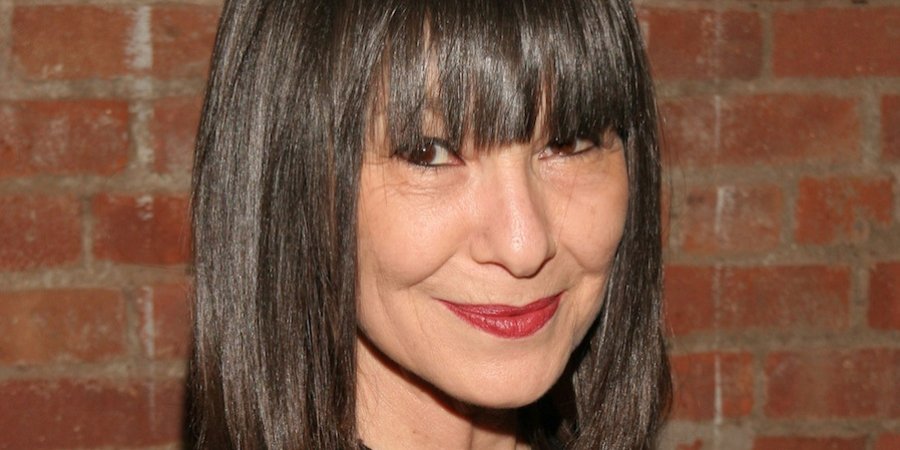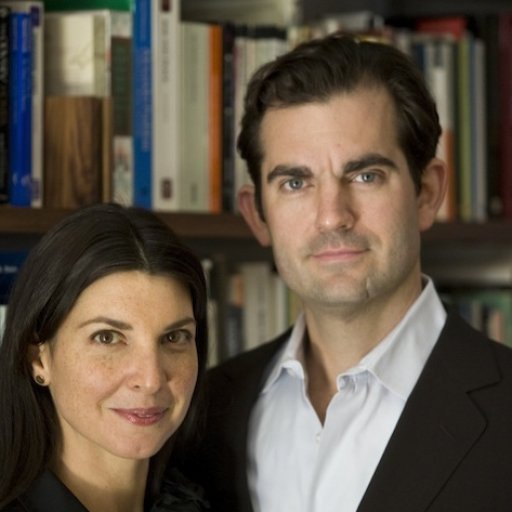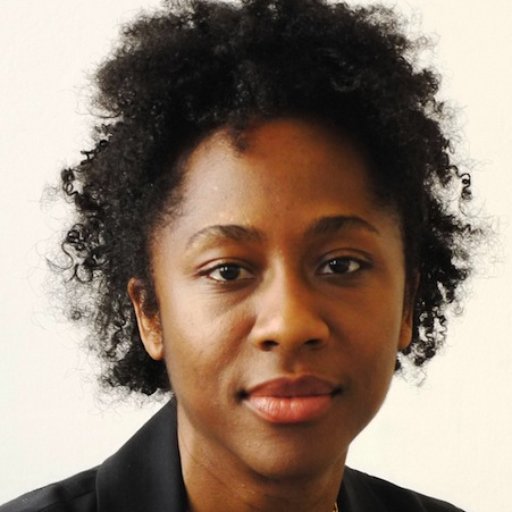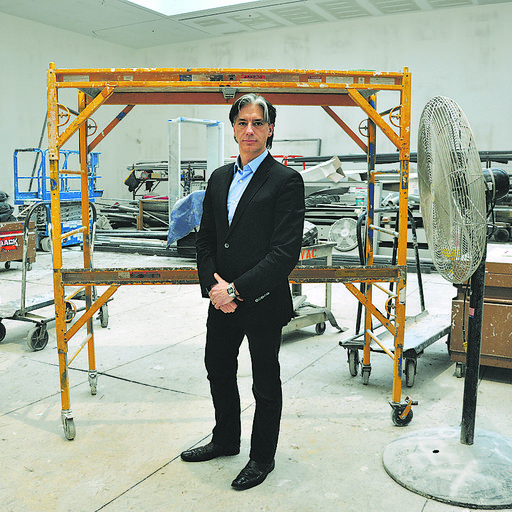As a historian who has looked back on the evolution of performance art from its origin in the beginning of the 20th century, RoseLee Goldberg has also been guiding the medium’s ongoing development through Performa, the influential New York biennial that she founded in 2005 as a way to showcase what was then a marginal art form. In the years since, performance art has exploded into the larger culture, gaining a level of visibility—from Marina Abramovic’s blockbuster MoMA exhibition to Jay Z’s “art” performance in Chelsea—that would have been unthinkable only a few years ago, let alone in its 1960s heyday.
As such, Goldberg, the author of the definitive history of performance art (which she published in 1979, and continually updates), has a unique vantage point for watching new currents in the medium as they develop—and then helping to nourish them through her organization. To find out where performance art is heading, Artspace editor-in-chief Andrew M. Goldstein sat down with the Performa director to talk about the art form's immediate future.
Since Performa is a biennial, there’s ample time in between editions for artists to pivot and change direction—and for the medium as a whole to evolve. How does Performa try to engage with or guide that evolution?
As an art historian, I’m always looking worldwide at what’s going on out there, and the different threads that are beginning to emerge. How that shapes the two years in between biennials is very interesting, because that idea of Performa’s format is to commission new work—so, in a sense, the goal is to debut commissions that will change things all over again in the next two years. And the beauty of these commissions is that we don’t know what they’re going to be until they are finished. In some cases, there’s an almost two-year working process with the artist—it takes a lot of engagement, a lot of conversation, and a lot of involvement in history. I’m always trying to expose the history of performance and tell the artists about it, because, really, a lot of people don’t know the history very well. It actually goes back a long way—it just hasn’t always been called performance art. The entire 20th century has been an multimedia century, and from Futurist art to The Cabinet of Dr. Caligari to Man Ray’s “rayograms,” everyone was working in a whole range of different media.
What are some of the most notable shifts in performance art that you’ve noticed since the last Biennial?
I’ve been looking very closely at places far afield like Pakistan and India to find out why performance so integral to the broader cultural conversation. The challenge is not just to say, “Well, this is going on,” but also to ask, “How did this happen? What is occurring?” I recently wrote an article on performance in South Africa, which then pushed me to realize that when you venture further out from the center of the art market—that is, Berlin, New York, London, Paris—you really find performative work that’s about humanity, and that’s about citizenship. It’s a conversation about what it means to be a human being in these environments. So that’s really where I got the idea for one of our themes this year, which is citizenship.
Can you elaborate? How did you come to this conclusion?
It’s been rather research-intensive—we’ve all been reading deeply about citizenship, about notions of immigrant nations, about how people are moving around. We came to the conclusion that performance is a kind of passport that allows you to go in and out of different aspects of the art world. For an example, go back to the ‘90s, when [provocative Cuban performance artist] Tania Bruguera entered the international biennial world. She wouldn’t have really been able to do that as a painter from Cuba—as a painter from anywhere, it’s hard to enter the larger art world as a new modernist, as ‘The New Painter.’ Performance was her passport. The same goes for the Chinese artists we were all getting to know is the ‘90s, starting with Zhang Huan—all of his exhibitions here were of photographs of performances, of the artist wearing a cage or with Chinese calligraphy covering his face.
In addition to the rise of globalism, another force that one would expect to be reshaping performance is the Internet—after all, it’s revolutionized pretty much everything it’s touched. Performance art, however, is almost uniquely moated from the Internet due to its emphasis on live, in-person, time-based events. How do you see the two relating?
That’s a very interesting point. In response to what the Internet can’t do, yes, I think there is something about people coming together and having a shared experience in a museum, a gallery, or any other space that is integral to performance art. The Internet, on the other hand, is keeping people out of the galleries—I’m hearing that from different writers, and I think it’s very real. The flip side is that the Internet actually provides a lot of information about performance. You can go online to UbuWeb or other sites and find an early Yvonne Rainer film to watch, or early Joan Jonas, or other documentary material that was not available pre-Internet. So now people can begin to have a reference to this history, starting from when people started to document the work in the ‘60s, and that’s a very interesting reshaping of the audience’s knowledge.
More importantly, in order to be a young artist, you have to have a memory bank of so much material that you’ve seen. Since you were a kid, you’ve seen paintings, you’ve looked at art books, you’ve been through museums with your parents—but when it comes to performance, most artists just haven’t been able to acquire that reference. So now the Internet brings people into the discipline in a more informed way.
Painting is another art form that at first might seem resistant to the Internet, but the vocabulary of the web and the digital world has begun to show up in the medium, with pixelization, laser printing, and other digital means cropping up in canvases everywhere. How has have the vocabulary and the tools of the Internet started to affect the ways that people are working with performance?
Artists, and probably all of us who are in the art world, look at things. We look very carefully—our eyes are like massive binoculars. And I think that its this visual element of what happens on the Internet—like, as you said, the pixelization of images—that invariably is what works its way into art, more than the technology itself. A lot happens when you stare at a screen, and I think we’re all very intrigued by that. Also, the things you can make on the Internet are actually becoming beautiful. There hasn’t always been a beautiful aesthetic online. Just look at the YouTube logo—we’re not used to seeing things where you do a double take and say, “This is beautiful.”
One Performa artist, Ryan McNamara, is doing an Internet-themed story ballet. What does that mean?
With somebody like Ryan, who is not only a performance artist—I don’t like to use that phrase "performance artist," actually—but really a visual artist. He started out as a photographer. He understands his performances as visual layerings that he can do live, where he can talk about things that he can’t do in a photograph, but you’re also seeing stunning visuals. Some of the visuals he’s put out as teasers for his piece are startling. They’re really beautiful, and what’s interesting is that they work online, and they work as photographs, and they will work live. That’s what’s obviously so exciting for me, and why I never tire of looking and thinking about this. There are these layers of visualizing the world, of critiquing emotions about it. It’s going to make a different kind of impression—a visual impression, a sensual impression, a conceptual impression. These are the things that become so interesting about visual artists who work between the screen and life. There’s quite a fascinating gamut there.
How is his ballet, which is titled “MEƎM: A Story Ballet About the Internet,” actually “about” the Internet?
He’s being a little secretive about it, which is always fun. He’s specifically talking about the process of looking for dance on the Internet—that is, how you can search for videos of Indian dance, you can look at documentation of Balanchine from the ‘30s, you can move through the Internet to find dance from all over. That’s his starting point for playing with this, and there will be different kinds of dances. It’s almost like a cut-and-paste sequence of dances representing the kind of varied experience you find online, and he’s importing the kind of collaging, editing way of thinking that we’ve all learned from researching on the Internet.
Another aspect of the Internet that has begun to enter performance is social media, with some live art events being coordinated through its channels. Have you been looking in this area as well?
I’m sure there’s something fabulous out there—I just haven’t seen it yet. It does straddle the fantastic of ways of crowdsourcing and that kind of thing, so I’m also trying to think, “Okay, how can we use that? How can we put something up that maybe will get your attention?”
You mentioned performance as being like a passport for artists from countries like Cuba and Pakistan to break into the wider global contemporary-art conversation. How are you seeing the effects of this phenomenon being borne out? Is it creating a sense of cross-pollination, or something else?
I don’t think it’s cross-pollination per se. Going back to some of those countries outside of the art center—and I grew up in South Africa, so that’s a strong influence for me—there’s dance, there’s ritual, there’s filmmaking, and there’s a much greater sense of art forms as being woven into the culture. In South Africa, singing, stamping, making the body move was at the heart and soul of being an artist as much as making objects. Growing up there, you hear and sense things around you that are much more multilayered. If you talk to an artist about growing up in Iran or in India, object-making is not a separate art as it is in the world that we live in—it’s not about the marketplace and the gallery world and all the other ways that we’ve come to think of art.
What you find in those cultures farther afield is there’s a lot of ritual, a lot of ceremony. If you really want to understand Nam June Paik’s performances, go back and watch Korean rituals that surround marriage, death, and other sacred moments of life. There are these shamans who come and create projects to mark the occasion. That ritualized aspect of life and celebration and spectacle that goes with cultures outside of the Western mold is very densely layered. Then to find performance in them, and to find someone who can bring that layering into the Western art world, is interesting to watch.
How do you advance this process through Performa?
What we try to do is create fictional archives and conversations from all around the world to make this kind of global work understandable in a New York setting—to make it relevant, rather than just a form of cultural tourism. When we ask an artist to come here, our conversation becomes about what’s going to happen when they land in New York—how do they make somebody care about their work as more than just something that’s come from a faraway place? Whether it’s Pawel Althamer from Poland or Subodh Gupta from Delhi, I really ask them to think about something that’s a conversation about having their art in New York. There needs to be a connection, otherwise you’re just bringing in exotic goods from afar.
When you mentioned how performance was a passport for Tania Bruguera, the way it served that purpose was primarily because she became known for highly provocative, radical performances, from serving cocaine to audience members to reading a speech onstage while repeatedly putting a gun to her temple and playing Russian roulette. That kind of shock treatment is a fast and effective way to break through to the wider art world—and gain notoriety—but are there other strategies that allow performance to be a passport?
That’s such a good question. Different periods in time, there’s an innate need for what artists are doing to make art of a certain nature. The ‘60s we all know had Vietnam, so there was all that protest art. Conceptual art came out as a kind of protest against capitalism and a refusal to make a market for this work, saying, “No, we refuse commodities. We won’t be a part of this game.” These artists had a really strong set of ethics. Then things change. If you go through the politics and economics, in the ‘80s Reagan comes into power and there’s suddenly yuppies, there’s suddenly the world moving around. A totally different attitude emerges, and there’s a new interest in pop culture and so on.
But for radical countries that were just coming out of totalitarian regimes in the 1980s, like Cuba or China or Russia, radical performance remained a critical tool—and that was the way we heard about these artists, whose work was against institutions, out on the streets, and held in private homes. It was dangerous because people were trying to escape political persecution in areas of conflict. You still see that coming out of certain conflict regions, where the work is deeply disturbing and problematic.
On the other hand, with someone like Subodh Gupta his work becomes about the celebration of very specific, ordinary things, because his childhood—and I’m not saying it was a rosy time—was not colored by deep conflict. When you’re looking at someone like Pawel Althamer or other Polish artists, the conversation might be about citizenship in a foreign country. In each case, there are different reasons why work can be disturbing. Not all performance has to be about extreme measures or extreme pain. That was the beauty of Ragnar Kjartansson’s [2011 performance] Bliss—people were saying that it was 12 hours of ecstasy, of pure joy. I think the reason Performa has really taken off so strongly is that it shows that there are different kinds of performance. People are learning that the variety is huge—it’s as wide as painting.
To continue just a little further with your passport metaphor, it reminds me of one of the most talked-about moments of year, when Jay Z did a quasi-endurance-based performance at Pace Gallery with Marina Abramovic and got the whole art world to come and participate in filming the video. It was a huge sensation. Performance, it seemed, was functioning as a passport for him to enter the art world as a cultural actor, not just a famous and wealthy musician who collects art and raps about art as the ultimate status symbol. What did you make of that event? Is it symptomatic of something taking place
Since I’m a historian, so look at the history. Artists in the world of pop entertainment have always been aware of everything—they watch what goes on in the art world closely. John Lennon came out of the art world. Madonna did a big photo series with Steven Klein in 2003 that came out of her knowledge of performance. Lady Gaga has certainly been looking at the art world. She grew up in New York—how could she possibly not know about the art world? Jay Z stepping into this is not a surprise at all. But the other point is that he’s a collector, and he knows the circuit. He’s in and out of the art world. I didn’t necessarily think that he was saying, “I’m an artist, and I’m want to be recognized as an artist.” He was riffing on something Marina had done.
His position in the world requires an understanding of how the culture is moving, and Marina sitting in the MoMA for the months that she did was one of the most radical and best-known recent cultural moments. So of course he knew about that. I was more intrigued that he noted the artist, riffed on her work, and respected her. She was very into it. He told her, “This is an homage to you.” It was a full recognition of what she had done with her work, and I think it was great.
But have you checked the words of the song? He says he’s surrounded by Warhols and all these artworks but then at one point says he’s been put in cuffs [“Got your man in a jam again, got my hands in cuff/I'm like goddamn enough”]. The song is about what buying art brings you, but then the police still come after him. I read that part as quite a critique of the art world. He's saying, no matter how much I acquire of all this art that makes people feel so great and important, you will still put the cuffs on me.
But then, if you go to the website devoted to the song, you can click on Basquiat and all these artists that are mentioned and find out more. So maybe some kid is going to go on there and discover a very interesting artist and learn at the same time about the economics of the art world. I feel that there’s some good to come out making this a part of a larger conversation for a new generation.
Do you find that there are more mass-culture pop figures and celebrities who are drawn to Performa, coming to the performances? We’ve seen it happening at Art Basel Miami Beach over the past couple of years, but what about in the performance sphere?
It’s funny—I don’t particularly want to drop names, but, yeah, certainly. James Franco did one of his most wonderful pieces with us, with Laurel Nakadate. And Angelina Jolie called me once and said she had an idea about a project, which we didn’t do. But I actually asked her that question: “How did you find out about us, and why are you calling?” Of course, I thought it couldn’t possibly be her. But it was, and it was quite wonderful. We had a long conversation, and I think a lot her interest comes from how it’s not about money, it’s not about marketplace. It’s almost the last place that’s a holdout for ideas and experimentation, and yet at a level that she saw had this incredible originality to it. So, yes, I’ve just dropped three names, but it is interesting that we create this space for people to think about ideas and let them do it in ways that they can’t do it anywhere else.
You can draw an interesting comparison between performance and theater here in the sense that theater has traditionally been the place where movie stars would go to do a kind of acting that is more connected to an audience, more risk-based, and that challenges them to do something different. I could imagine how performance might be analogously alluring to them, since its even closer to the ground and more experimental.
In the late ‘70s and ‘80s, that’s exactly what actors like Spalding Gray and Eric Bogosian were doing—they were coming out of the Hollywood world and saying, “Hey, the art world is such a relief—you don’t need a director, you don’t need anyone telling you what to do. You write your own script, and you don’t fuss.” That’s the beauty of the art world. There’s a division of labor in theater: there’s a writer, there’s a playwright, there’s actors. It’s so removed once it gets onto the stage that it’s not about the person who wrote it—or, even if it is, there are four layers in between. In visual art, the artists make all the decisions and impose a unique vision. So there’s a lot of interest from that field, where people look at the art world as a very permissive place that encourages people and says, “Amaze me.”
Also, in theater, you still want a resolution, even if it’s Beckett. You still want to be able to round out the narrative, and say, “That made sense,” so it all gets tied up. If you did that in the art world, people would say, “Well, do you think I’m stupid?” The artist leaves all these spaces for the audience and doesn’t explicitly tell you what to think. I could go on for hours talking about all these different divergences.
Now, performance art is a century old, which in comparison to painting and sculpture is almost prenatal. It’s not even a zygote yet. Do you anticipate any radical changes in coming years? For instance, will we all be wearing Google Glass for Performa 15?
Not really, unless someone’s doing something so profoundly astonishing with them that I feel it’s taking us into a new historical dimension. I keep my eye on all of that. But I’m not interested in something simply because the technology is there. I’m just still looking for art that talks about our culture in ways that I haven’t thought of yet.
























